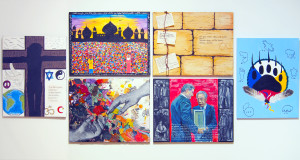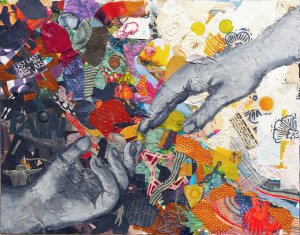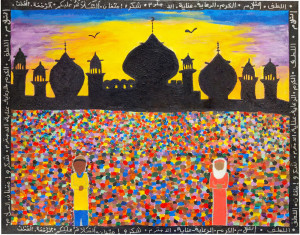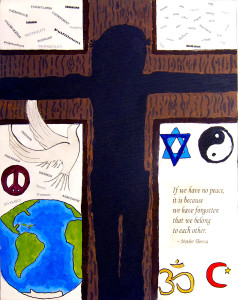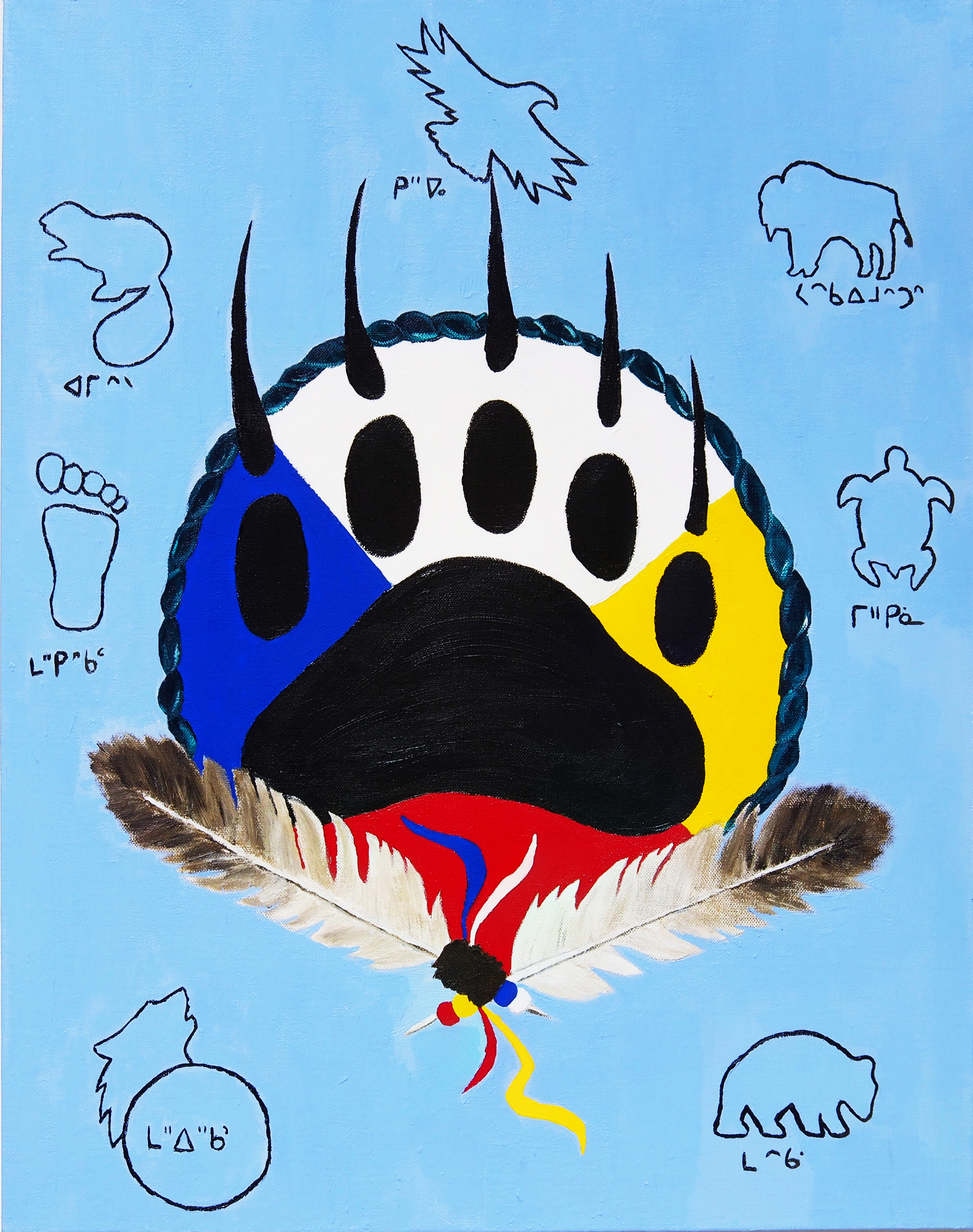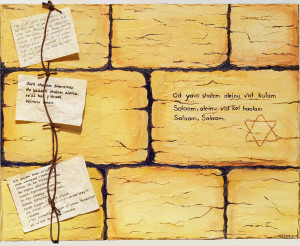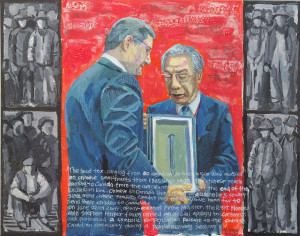For many of us, summer camp brings memories of new friends and out-of-the-ordinary experiences. Lesley Machon recently participated in a summer camp that brought her all that and much, much more.
Machon is a Junior High Humanities teacher at Calgary Jewish Academy. During the summer of 2014, she volunteered at a Children’s International Summer Village (CISV). CISV was founded in 1950 and is a global organization dedicated to inspiring peace, through building inter-cultural friendships. It now has over 80 national associations around the world. Machon spent four weeks at a camp in Norway with other volunteers and 56 children from 12 different countries, living and learning together.
“It was amazing,” says Machon, “and I wanted to bring some of the learning techniques and ideas from that experience back here. We have so many cultures living here in Calgary, but we don’t interact nearly enough.”
Machon began to dream about students from different schools and cultures working together on an “artful activism” project that would foster an understanding of social justice. She starting thinking about ways they could work separately and also together, and one day came up with the idea of using art as the medium.
At the time, Machon was a teacher at Almadina Language Charter Academy in Calgary, which is largely comprised of Muslim students. With the blessing of the school’s administration, she put together a package of lesson plans about valuing diversity, promoting equality, and expressing your ideals through art. Machon then started contacting Humanities teachers in other schools.
Students from four schools became involved in the project, including Almadina Academy. The others were:
-The Calgary Board of Education’s Langevin Science School
-Mother Earth’s Children’s Charter School, a First Nations school near Stony Plain, Alberta
-Christ the Redeemer Catholic School Division’s Notre Dame Collegiate in High River, Alberta
“It wasn’t easy at first, ” says Machon, “but once the project got started, they were all so excited! I discovered that there is a great willingness between cultures and different traditions to learn from each other. It’s just a matter of reaching out to them and getting the ball rolling.”
Machon’s project grew. Holocaust survivors from Calgary’s Jewish Community heard about the project and wanted to share their stories. Then bar and bat mitzvah students and their Rabbi from Temple B’nai Tikvah came on board. While volunteering at the Calgary Drop In Centre, Machon got to know a homeless artist who had emigrated from China. He contributed a painting to the project about the Chinese immigrant experience, which shows Prime Minister Stephen Harper offering a full apology to Chinese Canadians for the Head Tax. The artist also stressed how art can help people cope with mental health issues.
All the paintings from the project, and the stories behind them, were on display at Calgary’s Glenbow Museum throughout the spring and summer of 2015. Machon also put together a travelling assembly, which brought together a Rabbi, a Blackfoot First Nations chief, an LGBTQ activist and a Muslim U.N. worker from Africa. They talked to students at the participating schools about their experiences, and how art can be a means to bring people together and nurture healing of past historical wrongs. As well, Alberta Health Services joined the project through its “Wellness Empowerment” program. Two counselors visited each school and engaged students in discussions about the importance of art as a tool for improving mental health and bringing about healthy conversations between different groups of people.
Students and teachers were thrilled with how the project turned out. As one student put it, “This project allowed me to show the beauty of my culture through art, and to discover the beauty of other cultures.”
Machon is already brainstorming about new projects and ideas. She believes strongly in fostering respect and compassion among students at a young age.
“I think it really does start with students,” says Machon. “I want to give them opportunities to get to know people of different backgrounds first-hand. We’re so bombarded by the media in ways that make us fear and mistrust that which is different. But this project allowed us all to see, through our discussions and sharing our art, that at the core we are all the same.”
All photos by Jasmin Ngu
The Stories Behind the Paintings:
(click on paintings to enlarge)
Langevin Science School
The Langevin leadership group’s painting is inspired by their experiences this year working to support Calgary’s homeless, as well as their interest in learning more about the connection between art and mental health. Their panel represents the darkness that homeless individuals who suffer form mental health can feel, and how, with a strong support network, these individuals can be lifted into a more optimistic and positive space. Between the hands on the panel is a small spark, representing the power and beauty that comes from a strong, supportive community working together.
Almadina Language Charter Academy
The student participants come from diverse cultural, social and educational backgrounds. While all of the students speak English at school, many speak another language at home. The students really wanted to use their canvas to represent the peace and kindness they felt their culture represents. Culture and tradition were critical aspects of how they viewed peace. One student stated, “We want to show peace and kindness in our art. We want to share a part of our culture with other people, and show this through our Quran and the head scarves our women wear.”
Students felt that collaborating on this project made the project very special and unique. They felt that working with others can be difficult, but that it was an important part of the peace project. Many students commented on how this project allowed them to consider different perspectives, especially when it came to defining what peace meant to them. They enjoyed brainstorming and planning out how to represent the peace they felt and considering other perspectives they had not thought of before. One student commented, “Different people understand different opinions, and those different opinions can be seen in a collaborative project.” Students also felt that this project allowed them to use artistic skills, the skill of open mindedness, and the skill of teamwork to help them work together to communicate their message.
Notre Dame Collegiate
Grade seven students from Notre Dame Collegiate embarked on discovering more about social justice issues in our world, and why we should strive for peace.
“Our inspiration for our painting came from our religious and cultural traditions. The cross at the centre of the piece shows that we believe that Christ is the centre of all we do, and that Christ gave his life for us so that we can have peace; he is our best example for how to treat others. The images around the cross are symbolic of what we feel peace is and should be: the words at the top of the painting are synonyms for peace and the word peace as it is said in other languages, showing that the desire for peace, by any name or in any language, is universal. The dove, peace sign and world are all recognizable symbols for peace and are what we want – a world where peace triumphs and where all are treated fairly and equally; and the symbols of other faiths – Jewish, Muslim, Hindu and Buddhist symbols – surrounding the quotation from Mother Teresa suggest that no matter the system of beliefs to which we subscribe, we all belong to one another and should treat each other with love, dignity and respect.”
Mother Earth’s Children’s Charter School
The grade 8/9 Social Studies and Language Arts students were given the task of creating an image of what peace and social justice looks like within the context of their native culture.
There are many images in First Nations culture that evoke a sense of peace and connectedness to other people. The medicine wheel represents how all people in the world are interconnected and equal. Eagle feathers are extremely sacred and they signify closeness to the Creator who brings peace. The bear is a symbol of fearlessness and protection. The seven teachings are significant in that they provide guidelines for all humankind to live by: truth, love, honesty, wisdom, humility, courage and respect are all fundamental to the building of a peaceful coexistence.
Calgary’s Reform Jewish Community
The Reform Jewish Community is committed to fostering peace and social justice both locally and internationally.
The canvas consists of the Wailing Wall, also known as the Western Wall. It is the last remaining remnant of the Temple, which was destroyed by the Romans in the year 70 C.E. The Temple was the central location where the priests sacrificed animals – goats, calves, birds, etc. – in order to appease or pay tribute to Adonai. When the Temple was destroyed, the great Rabbis of the era re-invented Jewish life – the Jewish life we are familiar with today. Today, the Wailing Wall serves as a religious symbol for the Jewish people – a place of worship and a living example of Jewish history.
The main prayer on the canvas is called “Ode Yavo Shalom Aleinu”, a prayer that became famous following the assassination of Israeli Prime Minister Yitzhak Rabin. The barbed wire on the canvas is representative of the Holocaust, and what happens when cultures do not learn from and respect one another. The fact that the barbed wire is placed against the Wailing Wall with prayers of peace placed within it shows that peace can prevail over hate and injustice.
Calgary Drop-In Centre
A client of the Drop-In Centre chose to paint the history of the Chinese immigrant experience and how it pertains to social justice.
Former Prime Minister Stephen Harper is pictured offering a full apology to Chinese Canadians for the Head Tax, and expressing his deepest sorrow for the subsequent exclusion of Chinese immigrants from 1923 until 1947. This piece speaks to the artist’s experience as someone who came to Canada form China seeking work and a better life, and who struggled and continues to struggle. It speaks to the experience of many of the Drop-In Centre’s clients. Fifty percent of the homeless clients live at the shelter because they can’t afford Calgary’s high rents.


